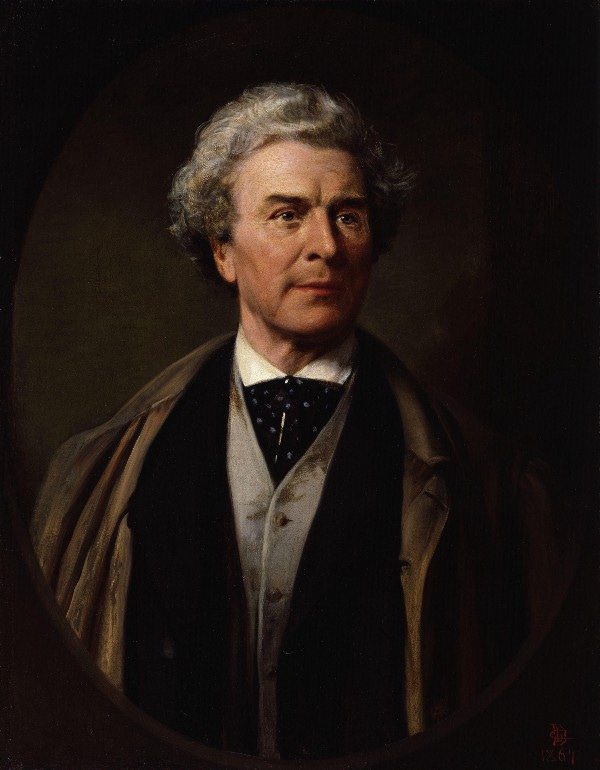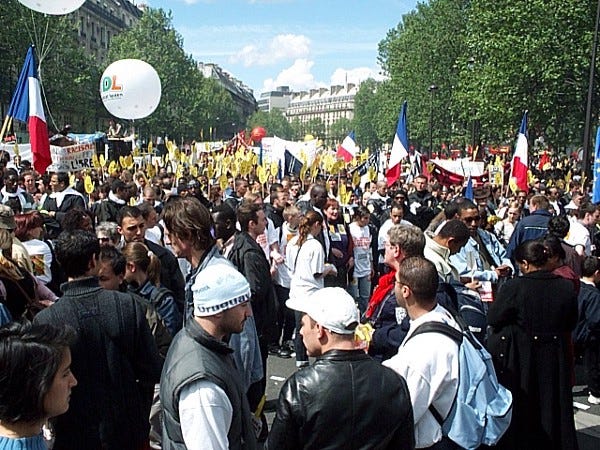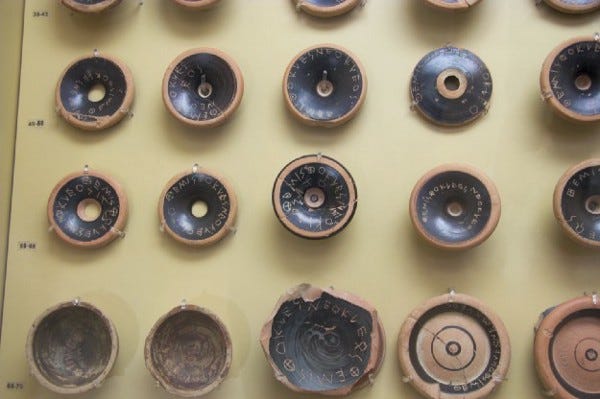Ranked choice voting
A voting system in profile
A voting system in profile
Right now, the most successful voting method reform movement in the United States is the one in favor of what is currently called ranked choice voting (RCV) by advocacy groups FairVote and Rank the Vote. Versions of ranked choice voting have been adopted at the statewide level in Maine and Alaska, making this one of the three most important alternative to a simple plurality vote in the United States. Other versions of this balloting system have used in Australia, although there are important differences between Australian and American versions of the system.
RCV has several advantages over plurality voting. It is more resistant to “spoiler” candidates, and in cases where there are three major candidates, it is very similar to a plurality vote with majority runoff — only without requiring voters to go to the polls twice. Because it is closely related to plurality voting, it is easy to explain to voters who are accustomed to plurality voting. The big change from voters’ perspectives is that they need to rank candidates.

There are three major disadvantages to RCV. First, ranking candidates can be very complex, especially when there are more than four candidates. (There are 120 ways to completely rank five candidates.) The ballot is more difficult to fill out because of this. This disadvantage is not unique to RCV; there are other systems that require ranked ballots.
Second, because RCV uses a series of plurality votes, it inherits some of the same problems as a plurality vote. Candidates who are broadly popular may lose in the early rounds due to a lack of first-place rankings.
Third, the process involves counting and recounting the ballots multiple times. This makes the counting process complex, difficult to centralize, and also means that from election to election, the system can show difficult to explain (non-monotone) results.
What’s in a name?
The name “ranked choice voting” is unfortunate from a theoretical perspective, because there are many other voting systems which ask voters to rank candidates — for example, the venerable Borda count. Advocates at FairVote and Rank the Vote have found the name useful because it describes what a voter does with their ballot — rank choices.

The systems currently known as “ranked choice voting” have also been known as instant runoff voting, single transferable vote, alternative vote, and also as the Hare method. The method traces its origins the political advocacy of Thomas Hare, who wanted parliamentary elections in Britain to be more proportional.
All four names have been used freely by different groups at different times to refer to several distinct but closely related voting systems.
This includes proportional representation systems intended to fill multiple offices (most notably in Australian elections) as well as elections intended to fill a singular office (e.g., as in American elections). From a theoretical perspective, the single-winner versions of the system are simply special cases of the more general multi-winner version, but multi-winner systems have fundamentally different properties than single-winner systems. (E.g., approval voting can give good results as a single-winner system, but is not very proportionate in a multi-winner system.)
How ranked choice voting works
First, each voter ranks some (or preferably all) of the options they’re voting for. In some cases, this may mean writing down a list of candidate names in order; in other cases, it may mean filling in a number next to the candidate’s name. This part of the process is not unique to RCV.
The next step is to count the number of times each candidate appears in first place on a ballot. If a candidate has received more votes than a certain fraction (usually either the Droop quota or Hare quota), they are elected, and that fraction of ballots is then discarded. If there are seats remaining to fill, the candidate with the fewest first place votes is eliminated, and this step is repeated.
If a ballot no longer has any remaining candidates left on it, that ballot is exhausted and discarded. This is much more likely in versions of RCV that do not allow voters to rank all candidates, such as the recent Democratic primary for mayor of New York City.
Complications
Aside from the fact that filling out a ranked ballot is more complicated — slightly so with 3–4 candidates, significantly with 5+ candidates — RCV has some weaknesses inherited from its use of a plurality vote and some weaknesses based on its use of multiple simulated election stages.
Many voting theorists dislike RCV as a method of electing a single candidate because it fails some important criteria. The system has always been more popular among reformers than theorists. (Note that voting theorists more often refer to it using the older names — Hare method, STV, AV, or IRV. RCV is a relatively new name for an older system.)
Problems with plurality revisited

Because RCV only counts current first place rankings in each round, it’s possible for broadly acceptable compromise candidates to be eliminated in early rounds with few first-place rankings but many second or third place rankings. This includes Condorcet winners who would defeat any other candidate in a head-to-head race. This is a very significant flaw.
However, RCV is better than plurality when it comes to this issue. While there can be a nasty center squeeze in the early rounds, RCV will count secondary preferences of voters eventually. Also, unlike a plurality vote, RCV cannot elect a Condorcet loser, because its final round is a majority vote. It gives the same safeguard against Condorcet losers that a majority runoff does, without the inconvenience to voters of showing up to the polls twice.
Multi-stage elections and monotonicity
Multi-stage elections in general have a problem with monotonicity. That is to say, a candidate can do worse by improving their position on ballots. For example, suppose that there are three candidates: Jacque, a center-right politician; Lionel, a center-left politician; and Jean-Marie, a radical nationalist. Lionel, a sitting incumbent, is broadly popular but does not stir great passion among his supporters.
In the first round, Jacque earns 5,665,855 votes; Jean-Marie earns 4,804,713 votes; and Lionel earns 4,610,113 votes. The nation erupts in protests.

However, there are only about 720,000 voters who have Jean-Marie as a second choice — he is either loved or hated by most — and he only earns 5,525,032 votes in the second round, losing resoundingly to Jacque.
However, suppose that Jacque had realized that Jean-Marie was a serious rival and campaiged extra hard in areas where Jean-Marie’s support was strongest. If Jacque had won over about 200,000 of Jean-Marie’s first-round voters, Lionel would have suddenly placed second — and quite possibly defeated Jacque, because many more voters had Lionel as their second choice. Even if the final round looks like a blowout, a multiple stage election can be ultimately decided in a narrow margin in an early round.
All multiple stage elections (whether their multiple stages are conducted with the same set of ballots or not) are vulnerable to counter-intuitive situations where one candidate gains support but loses the election as a consequence. RCV is less vulnerable to this than a plurality election with a separate majority runoff, because voters cannot change their expressed preferences in between the two elections; however, it is still vulnerable.
Auditing and decentralized counting
Another issue is that counting is a complex process that has to be centralized to some degree. Precincts must either physically or virtually transport the ballots to a central counting location, or at least report the number of each unique ranking of ballot.
For Alaska’s variant of RCV, which limits the number of candidates to four, this is not difficult. There are only 24 possible complete rankings of four candidates; including partial rankings increases this to 52.
However, the number of types of possible ballots increases very quickly with the number of candidates. Take, as an example, the ballot to the left, from Higgins in Victoria, Australia. There are 40,320 ways to rank all eight candidates. If you allow the counting of partial rankings and ties, this number skyrockets to 5.16 million.
Considering that Higgins has a little over a hundred thousand eligible voters, transmitting the information contained on each ballot is not an intractable proposition — fundamentally, each ballot has eight bytes of information, so there’s only about a megabyte of information that needs to be brought to a central location and processed multiple times.
However, it’s a lot of information to try to deal with by hand. It is more difficult to recount or audit RCV elections. The reliance on more complex counting processes means that irregularities are harder to detect.
Summary
RCV is not well-favored by theorists over other advanced methods of voting; however, it has a number of significant advantages over plurality voting. The reform movement that has gathered behind RCV has scored quite significant success, and looks poised to win more ground in the near future. From my perspective, this is unequivocally a positive development.

RCV is better than the alternative of continued use of a plurality vote. It can help voters grow accustomed to doing something different from casting a plurality vote, and it can help open up the conversation about moving away from plurality voting. It is an easier conceptual jump in some ways— each voter has a single vote that counts for a single candidate at a time. The vote is passed from candidate to candidate.
The downsides of RCV are that once the number of candidates gets large, things get complicated. Things are complicated for voters, who may struggle to rank more than a handful of voters. Things are complicated from the counting side, because there are many possible different ballots that voters could cast, and the number of simulated election stages increases as well. Finally, it’s complicated from the candidates’ perspective, because small changes in the order in which candidates are eliminated can produce very large changes in the final outcome.
Speaking as a voting theorist who knows that RCV is not one of the main contenders for being the best voting system, it still will be a pragmatic step forward. We don’t know what the best voting system for each situation is; it’s ultimately an empirically untested question that depends on voter behavior and the political landscape. However, it’s a safe bet that RCV will usually be better than a plurality vote.


